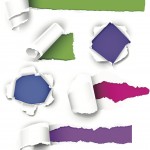
Researchers from Manchester University have conducted one of the largest randomised controlled trials ever undertaken to investigate self-harm in adolescents. The trial published in the BMJ examined the effectiveness and cost-effectiveness of group therapy for self harm in young people by randomising 366 patients to:
- Manual based developmental group therapy programme specifically designed for adolescents who harm themselves, with an acute phase over six weekly sessions followed by a booster phase of weekly groups as long as needed,
- Or routine care alone.
Randomisation was by minimisation controlling for baseline frequency of self harm, presence of conduct disorder, depressive disorder, and severity of psychosocial stress.
The participants in the trial were recruited from eight child and adolescent mental health services in the North West of England and were young people (aged 12-17 years) with at least two past episodes of self harm within the previous year. Patients were excluded from the research if they did not speak English, had low weight anorexia nervosa, acute psychosis, substantial learning difficulties, or were currently in secure care.
The primary outcome was frequency of subsequent repeated episodes of self harm. Secondary outcomes were severity of subsequent self harm, mood disorder, suicidal ideation, and global functioning. Total costs of health, social care, education, and criminal justice sector services, plus family related costs and productivity losses, were recorded.
The results showed that group therapy was more expensive than routine care and did not improve outcomes:
- The trial cohort as a whole showed significant improvement from baseline to follow-up
- On the primary outcome of frequency of self harm, proportional odds ratio of group therapy versus routine care adjusting for relevant baseline variables was 0.99 (95% confidence interval 0.68 to 1.44, P = 0.95) at 6 months and 0.88 (0.59 to 1.33, P = 0.52) at 1 year
- For severity of subsequent self harm the equivalent odds ratios were 0.81 (0.54 to 1.20, P = 0.29) at 6 months and 0.94 (0.63 to 1.40, P = 0.75) at 1 year
- Total 1 year costs were higher in the group therapy arm (£21,781) than for routine care (£15,372) but the difference was not significant (95% CI -1416 to 10782, P = 0.132).
The researchers concluded:
The addition of this targeted group therapy programme did not improve self harm outcomes for adolescents who repeatedly self harmed, nor was there evidence of cost effectiveness. The outcomes to end point for the cohort as a whole were better than current clinical expectations.
Green JM, Wood AJ, Kerfoot MJ, Trainor G, Roberts C, Rothwell J, Woodham A, Ayodeji E, Barrett B, Byford S, Harrington R. Group therapy for adolescents with repeated self harm: randomised controlled trial with economic evaluation. BMJ. 2011 Apr 1;342:d682. doi: 10.1136/bmj.d682.

Mmm. Peer-pressure and rebel-yell are forces that will act in teenage groups more than others I imagine. I wondered if the demographic of a group makes a difference too. In an adult group session I attended you could see some were put off by the teacherly mode of the group leaders, and that had everything to do with long established gut-based relations to school and authority rather than willingness to receive help. I think the nice backgrounds of the therapists, or a cultural mindset of some kind, whatever the origins, hindered them from seeing it and being able to modify their style. We were a mixed group though – only about two of us seemed to have a comfortable openess to the teacher-pupil relationship, but we were doing most of the talking.
As a teenager you are forming a relationship with conformity and self-identity and also vulnerable to ‘other people’s stuff’.
It doesn’t seem too surprising that adolescents, in a highly distressed emotional period of their lives, might not respond well to any kind of ‘manualised’ therapy. Perhaps the problem might be the ‘manual’ rather than the ‘group’.